October 20-November 7, 2008
Summary: With new sites for revegetating in 2009 secured, we began breaking trails at three of them. There were celebrations in Bahia for the anniversary of the county and President Correa made another stop in Bahia to check up on the Bahia-San Vicente bridge progress. And I took a trip with Ramon and students to Parque Machililla near Puerto Lopez.
The weather has been cooperating very nicely for the work that needs to be done. I would describe it as a damp dry season. It’s almost chilly when the wind blows and overcast nearly everyday. There have even been a few nights with drizzles and a couple of days where it rained, yes rained, during the day, sparing us the need to water the trees and allowing us to focus attention on other areas of work.
New sites have been secured in Jorge Lomas, El Toro and El Astillero. Machete work was commenced to open trails for planting trees. The trails are needed to maneuver through the underbrush for planting as well as maintenance of the trees. Each site required five to six days of heavy machete work to be ready for hole-digging.
The plan is for each of them to be planted with between two and three hundred trees. These three sites in particular are emblematic of the areas we are looking to revegetate. They have not only been devegetated, but heavily exploited for agricultural purposes such as growing corn and cattle-grazing as well. They are devoid of topsoil and on relatively steep hillsides with very high risks of erosion, parts of the sites are in fact already well in the process of eroding.
All Planet Drum revegetation sites are selected based on a variety of factors including deforestation, erosion risk, water access, water security, and land owner security. Additional variables also enter the equation. For example, the Jorge Lomas and Astillero sites are directly above urban neighborhoods. Residents will be recruited to help with planting.
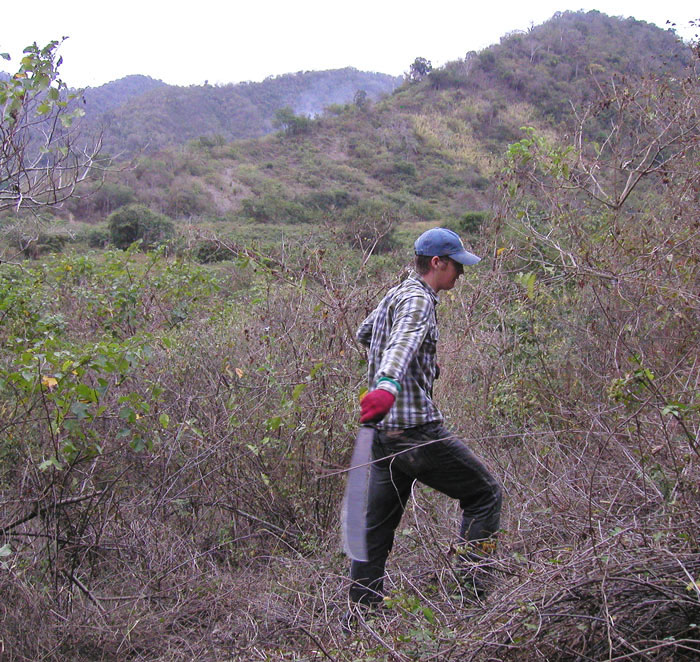
Malcolm swinging away in El Toro.
The El Toro site is situated on hillsides feeding the El Toro Creek watershed which has by far the worst localized erosion problem in the greater Bahia area. By the end of these three weeks, the Jorge Lomas site trails had been completed and the Astillero and El Toro sites are within a day or two’s work for completion of the trail breaking stage.
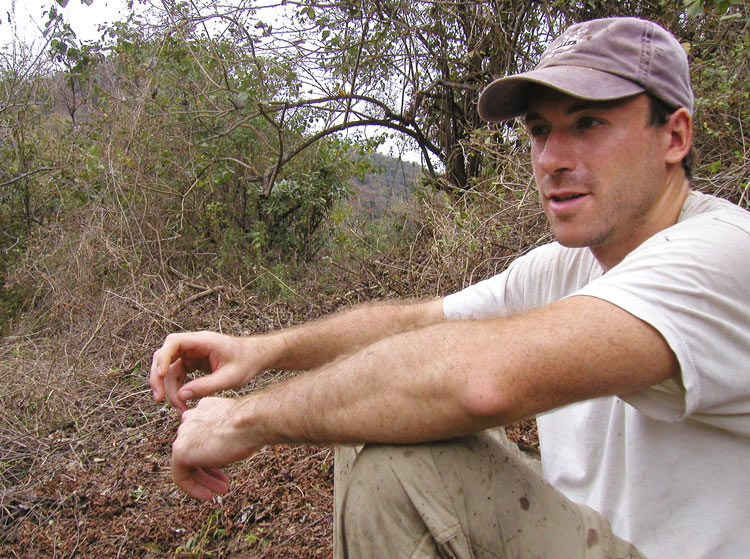
Clay takes a break while clearing trails in El Toro.’
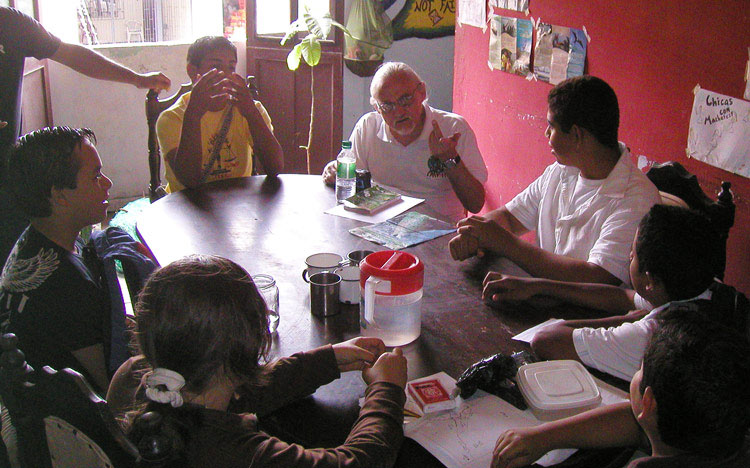
On Monday November 3rd there was a massive parade along the beach boulevard of town. In the evening, the city’s ‘Solemn Session’ was is a chance for the mayor and his administration to show off the work they’ve been doing over the course of the year. Ecuador’s President Correa joined this year’s session and shared his thoughts about the situation in Bahia.
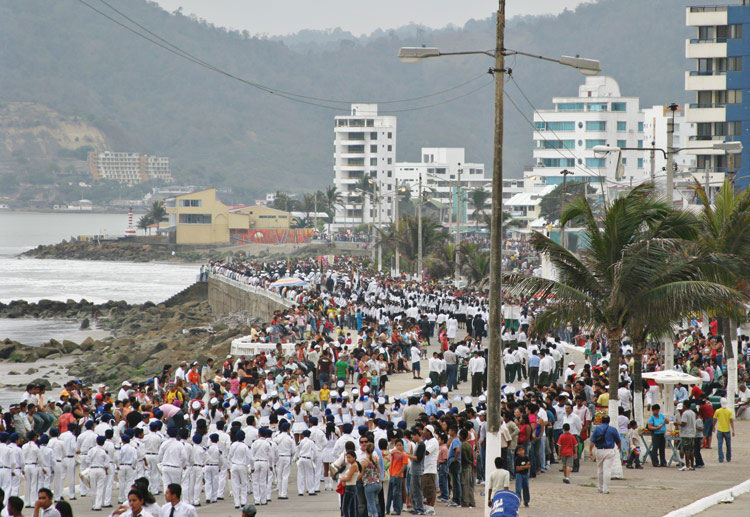
November 3rd parade in Bahía de Caráquez.
The session started with Correa personally handing out awards for individuals who have shown distinction in a variety of fields, including medical practice, sports, journalism, tourist investment, and music among others. In my head I imagined I heard them announce ‘ecosystem restoration’ and almost stood up.

Correa enters the auditorium at the Eloy Alfaro high school in Bahía to attend this year’s Solemn Session.
First to speak was Ingrid Zambrano (consejal). She talked about the series of economic downturns and disasters that have befallen Bahia over the course of a better part of a century. She briefly mentioned the neighborhood Maria Auxiladora, where horrible mudslides during the El Niño phenomenon in 1998 wiped out an entire hillside of houses, killing 17 people. This site later became the home of the Planet Drum’s first revegetation project and over the years has been entirely revegetated with hundreds of native trees. Then the mayor gave one of his pitifully bland speeches which hardly any one, including Correa even paid attention to. And finally, Correa presented. His speech, heavily influenced by his background in economics, provided inspiration for the town’s people when he spoke of the bridge that will span the Río Chone estuary between Bahia and San Vicente and unite the entire coastal region with unprecedented asphalt connectivity.
Despite the passion in his words and his palpable devotion to the entrepreneurial development from the poorest of the pueblo on up, it occurred to me that perhaps even Correa could use a refresher on the ‘Rights of Nature’ found in the constitution that his popularly elected assembly drafted.

In between parades and the hacking of underbrush with machetes, we’ve been spending our time in the greenhouse making sure as many trees as possible will be in their best condition for transplanting come the rainy season. Several beds of Ceibo seeds have germinated with over two hundred baby Ceibo trees (approx. 2/3rds of the seeds germinated). Bottles are cut, soil is mixed and the trees are carefully moved from the beds into the bottles where they will spend the next couple months growing (even the Ceibo babies grow quite rapidly) until we transplant them to the field.
We made another site inspection with Ramon Beletini who sought us out for planting trees on his land deep in the Fanca watershed. He drove us out to his land midmorning, farther back into Fanca than I knew existed.

The entire watershed is owned by his relative, who uses it (1,000 hectares) for raising cattle, except for his little island of land. A small forest exists on part of one of the hills, but the rest is in a similar state to the surrounding area. He plans on raising crops in the plains, but wants to return the hills to their natural state.
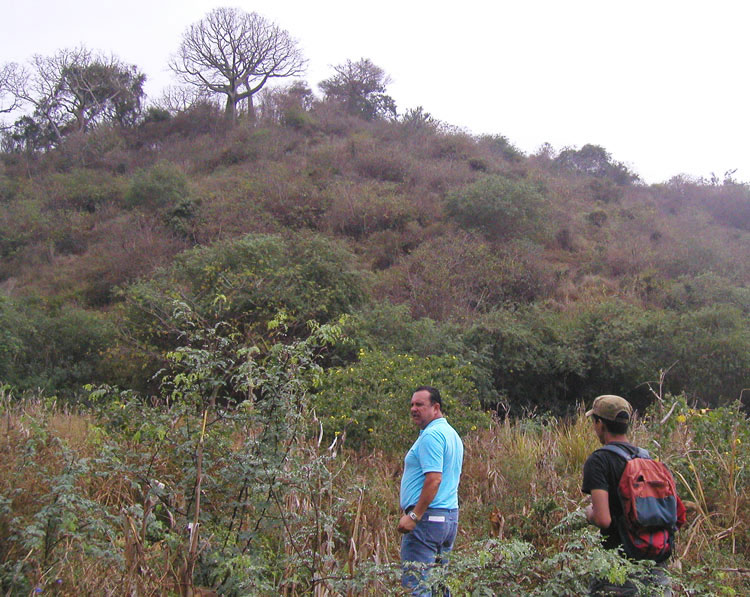
Ramon Beletini and Jaime during the first inspection of the land where Planet Drum will plant trees. The site will be located on the hillside in the background and is protected from cattle on the surrounding lands by barbwire fences.
He has promised to help us with day laborers for machete-ing trails, and digging holes, as well as with transport of trees for planting and carrying water during the dry season. If he lives up to his promises he will be one of our most reciprocal land owners.

Don Beletini and Jaime exploring the hills above Fanca. Bahia and the estuary are engulfed in fog in the distance.
On Friday, I joined Ramon, a couple of chaperones, and a group of forty students from the Javier Rodriguez School, including a large handful of students who are currently enrolled in or have already participated in the Planet Drum Bioregional Education Program, on a field trip to the Machalilla Park near Puerto Lopez. We filled an entire bus that had been rented expressly to transport us there and back. We left before sunrise and were back in Bahia by 9pm.
While there, we visited two areas of the park: in the morning, Agua Blanca and in the afternoon, Los Frailes. Agua Blanca is a community of people living within the park in an area that was home to several of the ancient civilizations that populated the coast of Ecuador.

They practice agriculture, such as harvesting honey from bees that pollinate the massive quantities of Algarrobo trees growing in the area, and are supported by tourists who visit the park. A local gave us a tour of the museum, which has many artifacts from the Manteño civilization, one of the larger pre-colonial civilizations in Ecuador. The region is known for its sulfuric baths that are purported to have age-defying properties. Regardless of their effects on one’s age, they were certainly refreshing, even if they did smell like sulfur.
After lunch, we headed to Los Frailes, one of the famous, relatively secluded beaches of Ecuador. Although the park reportedly protects about 55,000 hectares of land, from what I saw, much of it has been heavily deforested.
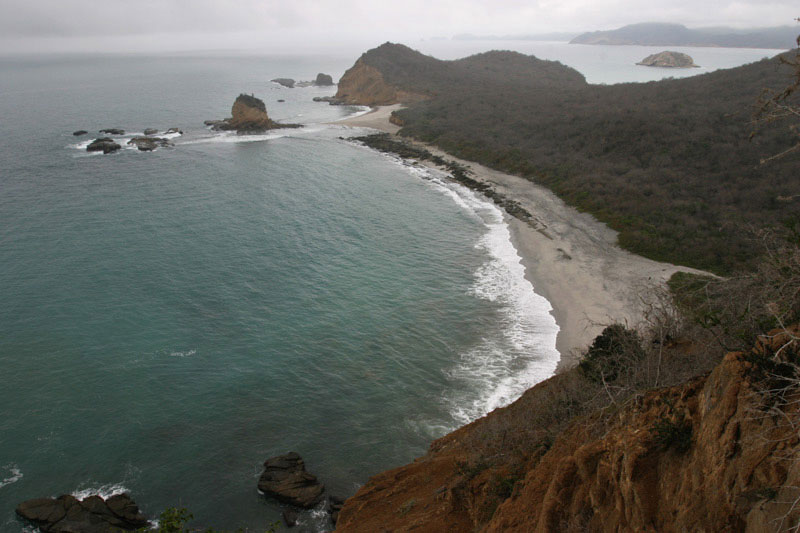
In Agua Blanca, nearly all of the trees were medium-sized Algarrobos at best. In Los Frailes all we saw were Moyuyo, Palo Santo and a handful of Cascol. Despite being a well developed ecological attraction, perhaps some further reforestation efforts are in order. Nonetheless, Los Frailes is truly breathtaking, even in overcast conditions. All in all it was an immensely fun trip, especially since I got to spend time with a bunch of the Bioregionalistas, in our favorite medium, the outdoors!
Pásalo bien,
Clay

Reader Interactions